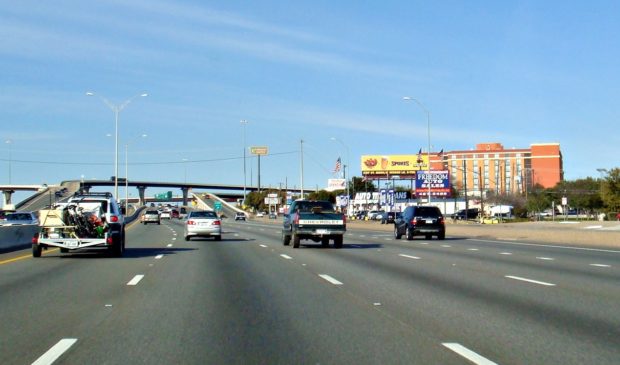Highways and interstates a top priority for pedestrian safety plan
Tuesday, January 17, 2017 by
Chad Swiatecki Austin appears to have had some early success in recovering from an all-time high in road fatalities in 2015, with 76 in 2016 compared to 102 the year prior. But reaching zero fatalities and serious injuries by 2025 remains the city’s goal, which local planners say will require analyzing huge amounts of data and implementing innovative solutions in all parts of the city.
The plan’s methodology has been circulating for review since November, and discussion at last Tuesday’s Urban Transportation Commission meeting focused on some of the methods at the city’s disposal to make Austin’s streets safer for people traveling on foot.
Joel Meyer, pedestrian coordinator with the Austin Transportation Department, told commissioners that the department is getting a handle on how pedestrians and vehicles coexist in various parts of the city and what measures can be taken to increase pedestrian safety.
Doing that will be key to realizing the goal of City Council’s Vision Zero Plan, because bikes and pedestrians account for half of all traffic deaths despite representing only 6.5 percent of all commuter travel, with pedestrians alone adding up to 30 percent of fatalities.
Meyer said research from other cities that have greatly reduced pedestrian accidents suggests that engineering solutions that reduce vehicle speeds are the most effective approaches. Those methods can include installation of traffic circles, medians, bulb-outs at crosswalks, speed bumps, street trees, two-way streets and more.
Voters’ approval of a $720 million transportation bond in November provides $15 million for the Vision Zero Action Plan.
The key will be deploying those methods where they will have the most impact on reducing fatalities, which will require a careful parsing of accident data. As an example, Meyer said that even though 87 percent of pedestrian-involved accidents occurred on local and neighborhood roads, nearly 50 percent of fatalities were concentrated on high-speed expressways and state roads.
Currently, Meyer and other city staff are creating a comprehensive record of every injurious or fatal crash in the Austin area for the past five years using data from local police as well as the Texas A&M Transportation Institute and the Texas Department of Transportation to determine what actions led up to the accident.
Completion of crash analyses in the coming months will lead to public outreach sessions in each district in March and April, including a safety workshop from the Federal Highway Administration, with a draft plan available for review by the end of April. Meyer said transportation officials hope to have a final plan for Council to consider by this summer.
Another collection of data that might become part of the city’s long-term plans for pedestrian safety will be coming soon from the city’s Pedestrian Advisory Council.
Later at Tuesday’s meeting, PAC member and local architect Girard Kinney told the committee that his group’s research had revealed frequently convoluted and counterintuitive rules on when and how pedestrians can cross roadways in cases where there’s no signal to prioritize foot traffic.
Kinney said confusion over that issue likely leads to many vehicle-pedestrian accidents and that more needs to be done to educate the public, with one approach being creating signage to keep pedestrians from venturing into harm’s way.
“An awful lot of people don’t know what the rules are, relative to when it’s legal to cross,” Kinney said. “And more importantly, the drivers don’t know the difference, either, on things like when the pedestrian gets the right of way.”
Kinney said his group spent a year preparing a report on the issue that will be finished in the coming weeks, with a draft set for review at the next meeting of the Urban Transportation Commission.
Photo by CamellaTWU made available through a Creative Commons license This story has been updated with the most recent version of the Vision Zero Plan..
The Austin Monitor’s work is made possible by donations from the community. Though our reporting covers donors from time to time, we are careful to keep business and editorial efforts separate while maintaining transparency. A complete list of donors is available here, and our code of ethics is explained here.
You're a community leader
And we’re honored you look to us for serious, in-depth news. You know a strong community needs local and dedicated watchdog reporting. We’re here for you and that won’t change. Now will you take the powerful next step and support our nonprofit news organization?



